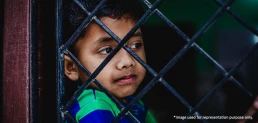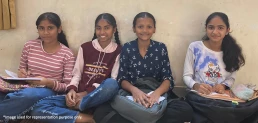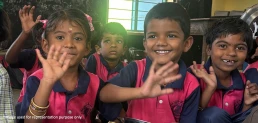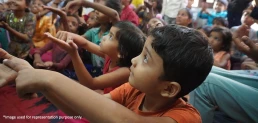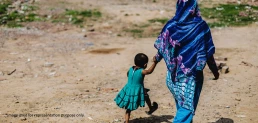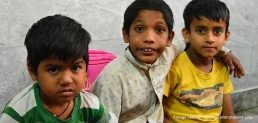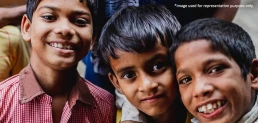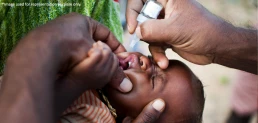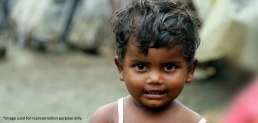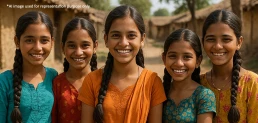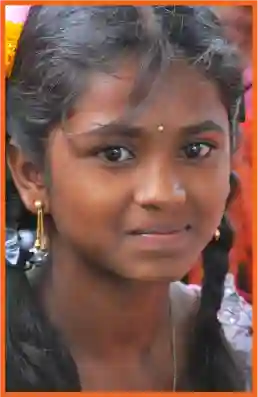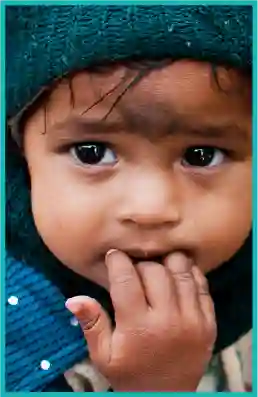Gender-Based Violence (GBV) is not an isolated issue that affects only the lives of immediate survivors. The consequences ripple and reflect on the lives of children too, who share the same household. Whether they experience it directly or witness it within their homes, the effects are long-lasting. When families choose violence as a way to function, it can disrupt their education, affect their mental well-being, and shape how they see the world around them.
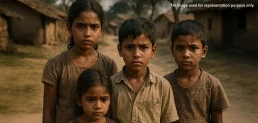

In this blog, let’s understand what GBV is, how it affects children, and the possible ways of preventing GBV, especially in underserved communities.
Also Read: Protecting Marginalized Girls
What is GBV
Gender-Based Violence (GBV) is an act of human rights violation that happens when someone is hurt or threatened because of the unequal power dynamics between men and women in society.
While boys and men can also face GBV, it’s mostly women and girls who are at risk. According to the UN Women 2023 Report, almost 1 in 3 women globally face some form of GBV, whether it’s physical, sexual, emotional, or financial.
The effects go beyond just the physical wounds, like injuries, unwanted pregnancies, and exposure to HIV. It reflects on their mental health too, in the form of anxiety, depression, and even post-traumatic stress.
Also Read: What is Gender Inequality?
Forms of GBV
Gender-based violence shows up in different ways, and each one hurts people regardless.
- Sexual violence: Forcing someone into any sexual act when they don’t want it.
- Child marriage: Getting a child, usually a girl, married before she’s old enough or ready.
- Domestic violence: Harming or controlling someone in the family, often a partner, through hurtful actions or words.
- Femicide: Killing a woman or girl just because she is female.
Why GBV Occurs
The roots of GBV lie in unstable households and a society that turns a blind eye to change. Let’s take a closer look at the causes:
- Gender inequality: It begins with the community mindset. When men are given unchecked power to decide, act, and react on behalf of women, women stop being treated as equals. They are instead controlled, confined, and often abused within their own homes.
- Poverty or unemployment: Financial stress can push individuals to their breaking point. Even though women aren’t the cause of job loss or low income, they end up bearing the brunt, treated as burdens, especially in underserved communities.
- Cultural apathy: Survivors often don’t even recognize GBV as a crime, because their communities treat it as normal. Even when someone tries to speak up, they’re silenced or shamed into staying quiet.
- Lack of awareness to access justice: To seek justice, one must first understand their rights. Illiteracy, poverty, child marriage, and fear of being socially isolated hold women back from taking legal action or finding support.
Also Read: Ways to Combat Gender Stereotypes in India
How GBV affects children
When GBV takes place at home, children are never just bystanders. Whether they face it directly or witness it happening to someone close, the impact runs deep.
- Loss of emotional regulation
Children who grow up around violence often find it hard to manage their emotions. Some act out, others go quiet. Anger, sadness, or fear becomes too big to handle.
- Dropouts and absenteeism in schools
For many children witnessing or experiencing GBV, home is hardly a safe space. The stress, fear, and tension often spill into their school life, leading to frequent absences or even dropping out altogether
- Violence becomes normal
Over time, children may start to believe that hurting or being hurt is just a part of life. When violence is all they see, it shapes what they think is okay.
- Limited financial resources are affecting their future
In homes where GBV continues, relationships break down, addictions creep in, and money drains fast. Children end up paying the price, with no funds left to support their education or future.
Also Read: Women’s Empowerment Through Education Creates Generational Change
Prevention of GBV
Stopping GBV isn’t just about having laws; it’s about building safer homes, stronger communities, and more aware children. Here’s how we can take small but meaningful steps:
- Empowering youth with education
When schools talk about gender, respect, boundaries, and consent, children and adolescents start to see things differently. It helps boys and girls grow up knowing their rights and how to speak up, starting at home.
- Women as community facilitators
When women come together, they create strength. By forming groups, raising their voices, and supporting each other, they inspire others to stand up and break the silence.
- Support from health workers and community mobilizers
Frontline health workers like nurses, doctors, and Anganwadi staff are often the first to notice signs of GBV. Similarly, local leaders like Panchayat members, Sarpanch, and the police play a key role in shaping community mindsets. When they’re educated about gender equality, women’s rights, and how to access those rights, they can listen, support, and guide survivors towards help and justice.
- Emotional support for children
Children who’ve seen or faced violence carry it inside. Talking to someone, getting the right care, and feeling safe again can help them slowly heal and rebuild.
- Teaching self-defense
In places where change is slow, self-defense gives girls the power to protect themselves. When they speak up or fight back, it shows the whole community that silence is no longer an option.
Conclusion
In underserved communities, many children lose out on school and peace of mind because of child marriage, poverty, or violence at home. CRY America steps in to help bring back what they’ve lost by making sure they get to learn, feel safe, and just be children again.
We believe every child should grow up in a space where they know their rights, feel protected, and can dream freely about who they want to be.
Donate to CRY America to give every child the safe and happy childhood they deserve.
Recommended for you











